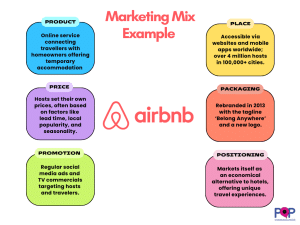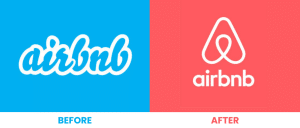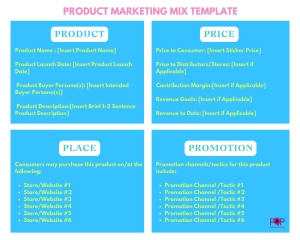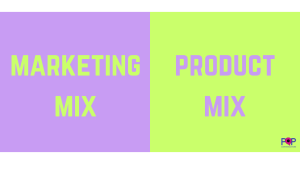What is Marketing Mix? A Complete Guide
Is the marketing mix just a part of the theory you study in your marketing course and never use later? Well, unfortunately, that may be true for most people. However, you should be using it throughout your marketing career – for your own good. Whether you are a marketing student learning your theory or a CMO trying to explain what their team is doing to their colleagues, marketing mix is a framework that would definitely come in handy.
Read this blog to know why and how.
What Is Marketing Mix?
The marketing mix addresses the key measures a business takes for marketing its products/services. Generally, it functions as a basic framework that breaks down the 4 main components or elements of marketing – namely product, price, place and promotion.
What Is the Importance of Marketing Mix?
In order to put it to effective use, knowing the importance of marketing mix is as essential as knowing what is marketing mix.
The marketing mix helps businesses organise all their marketing efforts according to department and task for more effective and systematic marketing campaigns. To put it simply, it does a remarkable job at keeping your marketing strategy on track and ensuring that you get the basics right.
The marketing mix framework originated in the 1940s, and it has been evolving since then. Although a few elements have been added to it over time, especially to cater to the current digital age, the marketing mix’s 4 original elements have stood the test of time.When applied correctly, these 4 core elements of marketing mix together offer a cohesive approach for creating a marketing strategy.
What Are the Elements of Marketing Mix?
The 4 original elements of the marketing mix are called the 4 Ps of marketing. Later, 3 new elements were added to the marketing mix to accommodate the effects of the digital revolution in marketing. The elements in this new version are therefore called the 7 Ps of marketing.
Here, we dissect them all:
The 4 Ps of Marketing
1. Product
‘Product’ refers to whatever your business sells – including products and services. Most of the work that is categorised into this element is usually the work done by product marketers or product managers. To perfect this element of the marketing mix, it is important to conduct extensive R&D, understand the consumers’ need for the product, create a product launch strategy and timeline and educate your employees, salespeople and potential customers about the product’s purpose.
2. Price
‘Price’ defines the price at which you decide to sell a product/service to customers. To arrive at this monetary amount, one should compare different pricing strategies, analyse other products of the same price in the market and collect insights from potential customers through focus groups and extensive surveys. Price affects your product’s positioning in the market, the speed with which it will penetrate the market and the profit margin and revenue targets of your business.
3. Place
‘Place’ refers to the platform on which your product will be sold. For products that are tangible, the ‘place’ usually includes real locations like your brand stores or retail stores where the product is resold. Today, it can also include other channels through which your product could be bought, such as the internet and the phone.
4. Promotion
‘Promotion’ refers to all the activities that make your target audience aware and craving to purchase the product a business is selling. Although the term ‘promotion’ includes paid marketing initiatives such as TV commercials, digital campaigns and OOH advertising, organic efforts like user-generated content, online reviews, word-of-mouth marketing and free press coverage are also entailed by it.
The Additional 3 Ps in the 7 Ps of Marketing
1. People
All businesses depend on the people who run them, right from their frontline sales executives to their MDs. Having professionally competent employees is crucial as they are as much a part of a business as the products/services it offers. That is why adding ‘people’ to the original 4 Ps makes a lot of sense.
2. Processes
‘Processes’ refers to the steps in the delivery of your product to a customer. It is added to the 4 Ps because how a product is delivered to a customer is also a big part of what the customer is paying for. Poor ‘processes’ that require too much hassle on the customers’ part can hinder the sales of even some of the most in-demand products.
3. Physical Evidence
Even if most of what the customer is paying for is non-physical, most services do involve some physical elements. For example, an insurance agency would provide their customers some or the other form of printed material. In case the material is a digital document and not printed on paper, it is still considered to be ‘physical evidence’ by definition.
Elements other than the 7Ps have also been added to the marketing mix in some cases. They are: positioning, partners, payment, productivity & quality and packaging.
However, during the creation of most marketing strategies, the 7 Ps are sufficient. And the original 4 Ps are ultimately and universally the most important ones to follow.
 How to Use Marketing Mix Strategically?
How to Use Marketing Mix Strategically?
Here are the steps you need to take to put the theory of marketing mix to effective practical use, be it for a particular product or your whole business:
- Begin With Market Research & Product Development
The success of marketing firstly depends on the marketed product itself. It is essential to ensure that the product is well-developed, so that a marketing team can promote its benefits and convey the story behind it. The ideal practices in this stage include:
- Conducting thorough market research to find out your potential customers’ needs.
- Interacting with your existing customers to know the pain points that need to be addressed in the new product.
- Keeping track of industry trends to discover a possible demand within your market.
- Analyzing your new product’s potential competition.
- Being in sync with the product team throughout the product development process to make sure it fulfills its target audience’s needs.
- Having the product elaborately tested by existing customers to see how they tend to use it and determine if it is truly a solution to their problems.
All these actions ultimately provide a rock-solid foundation for any product’s launch.
- Settle for the Best Pricing Model
A lot goes into deciding a product’s price, and the steps covered in the market research and product development stage make the process of finding out the best pricing model much easier and clearer. In order to maximize profit, one also needs to take costs into consideration.
During the pricing stage, here are the steps to be taken:
- Interact with customers or refer to the documents of your previously conducted market research to narrow down on your ideal selling price.
- Collaborate with the product team to make sure the product is developed economically, as that is essential to ensure profitability at the set price point.
- Discuss with financial experts to predict your sales and contribute to the bottomline of your business.
- Discuss and develop discounting schemes with your sales teams.
- Determine the way of adjusting forecasts of costs and revenues when you sell through resellers.
Also, make sure to factor in the value perceived by the target audience. Even if the product isn’t expensive to make, you can mark it up more if its competition is weak and it offers a huge benefit to its customers.
- Carefully Choose Your Channels for Distribution
The ‘place’ among the 4 Ps determines where your new product will be sold to customers. It could be a combination of brand stores, distributors’ stores and online portals in this age.
Here are the steps to take before proceeding with promotion:
- Figure out whether your new product would fare well in your chosen combination of ‘places’.
- In the case of real locations, consider the geographical aspects and make sure your product’s supply meets its regional demand – whether they are in certain cities, states or countries.
- Arrive at a comfortable agreement with resellers and retailers on your margins, MSRPs and markups.
- Find out the number of salespeople you will need to achieve your set goals.
- Set separate goals for retailers and resellers as your product could be sharing shelf spaces or search engine results pages with its competitors.
- Tactfully Create Your Promotion Strategy
Although ‘promotion’ is the element most closely associated with marketing, it is crucial to address the last in the marketing mix because even marketers require the foundation set by product, price and place to determine the best promotion tactics for a product.
Following are the various promotional channels at most of the contemporary marketers’ disposal:
- Content marketing efforts like building a website, blogging and other kinds of content creation.
- PR and collaborations with brand affiliates and social media influencers.
- Organic as well as paid social media marketing on popular platforms like Facebook, Instagram and LinkedIn.
- Search ads on websites such as Google and Bing.
- Ad films to run on TV and video streaming platforms like YouTube.
- Event marketing, which includes a brand’s own events as well as attending relevant industry events.
- Customer marketing and referral programs.
As a matter of fact, there are innumerable promotional ideas that can publicize your product.
Marketing Mix Example : Airbnb’s Strategy for Success
Airbnb began as quite a simple idea in 2008 – to help travellers find short-term accommodation and experience a new place without having to deal with hotels. It has now grown to be a global business valued at roughly $113 billion.
Here is Airbnb’s marketing mix example:

- Product
Airbnb’s ‘product’ is an online service that connects travellers searching for temporary accommodation with homeowners. The accommodations could be an apartment, a private room with some shared space or an entire property.
- Price
Homeowners/hosts listing their place(s) on Airbnb are allowed to set their own price(s). Most listings incorporate a value-based model in which prices are according to factors such as lead time, local popularity and seasonality.
- Place
Airbnb’s ‘place’ includes its websites and mobile apps for all the countries it does business in. More than 4 million homeowners/hosts from over 100,000 cities around the world have listings on the online platform/app of Airbnb. Anyone on the internet can easily book Airbnb listings in a few minutes.
- Promotion
Airbnb regularly runs social media ads and TVCs targeting hosts as well as travellers who are in search of accommodation.
- Packaging
In the year 2013, Airbnb rebranded itself and changed its tagline to ‘Belong Anywhere’ from ‘A place to stay’. Along with it came a fresh new logo, representing place, love, people and the ‘A’ in Airbnb.

- Positioning
Airbnb positions itself as a more economical alternative to a hotel while offering travellers more unique experiences. This positioning contributes significantly to the brand’s marketing efforts.
Marketing Mix Template
Here is a structured marketing mix template by Hubspot, which you can use to begin developing yours:

How Different Industries Leverage The Marketing Mix
- Marketing Mix for a Beauty Brand
The beauty products industry has an exceptionally competitive environment. However, there is still scope for innovation and groundbreaking cosmetic products, provided you make your brand stand out. For that, having the right marketing mix is key, to begin with.
Click here to learn how to create the right marketing mix for a beauty brand by reading about Sephora’s marketing mix in detail.
- Marketing Mix for a Tech Brand
The Marketing mix of a tech brand needs to highlight simplicity and innovation in order to make the marketing efforts truly resonate with the brand’s target audience.
Click here to learn how to create the right marketing mix for a tech brand by reading about the marketing mix of Apple Inc. in detail.
- Marketing Mix for a SaaS Brand
SaaS marketing is different from a majority of the other types of marketing because the business isn’t selling a physical or tangible product. But despite the differences, SaaS product marketers can optimize their marketing mix strategies with not too many tweaks. Instead of trying to control the result of their marketing strategy, they just need to focus on adjusting some variables.
Click here to learn which and how.
- Marketing Mix for a Home Decor Brand
The 4 Ps are just as important for home decor brands as brands of any other category. But other than the 4 Ps, it is also especially important to make sure the ‘processes’ are smooth and convenient. If potential customers don’t see an easy way to get your home decor products to their homes, you may miss out on a lot of sales.
Click here to learn how to create the right marketing mix for a home decor brand by reading about Pepperfry’s marketing mix in detail.
- Marketing Mix for a Pharmaceutical Brand
When a prosperous pharma brand develops its marketing mix, the importance given to each of the marketing elements is quite critical. The base drivers of the manufacturer organically help in building the brand’s equity, whereas the marketing mix optimizes all the marketing-led incremental drivers’ usage.
Click here to learn how to create the right marketing mix for a pharmaceutical brand by reading about the marketing mix of Sun Pharmaceuticals in detail.
- Marketing Mix for a BFSI Brand
Finance ‘products’ can be super-complicated. It is therefore essential to have a BFSI brand’s marketing mix that clearly defines whatever a marketing mix is supposed to. Other than the 4 Ps, ‘physical evidence’ is an important factor to be considered in the case of such a brand.
Click here to learn how to create the right marketing mix for a BFSI brand by reading about the marketing mix of Axis Bank in detail.

What Is Product Mix and How Is It Different From Marketing Mix?
Also called product assortment or product portfolio, product mix is the set of all the product lines offered by a business to its customers.
A product line is simply a category of products offered by a business. All products within a particular product line perform similar functions, target similar customers, offer similar benefits, sell at similar prices and have similar distribution channels.
Product mix is nothing but a subset of marketing mix. It is also an important part of a business model. A business could have many product lines, but it cannot have more than a single product mix.
What Are Product Mix Strategies?
Product mix strategies are marketing strategies that enable businesses to direct their resources and efforts towards the product lines and individual products among its offerings that show the most potential for growth, revenue as well as market share.
Every product mix strategy has the following 4 main dimensions:
- Width: The total number of product lines offered by the business.
- Length: The total number of products in the product mix of the business.
- Depth: The total number of variations of a product within a product line.
- Consistency: An indicator of the degree of similarity between different products in a product line.
Click here to learn the common product mix strategies used by small and large businesses worldwide.
Do you have mixed feelings about figuring out your marketing mixes and strategies yourself? Well, you can always have Pop Communications as your 360° marketing fix and let us take care of it. Have a look at our online marketing services and feel free to contact us anytime.
Email: [email protected] | Call: +1 647 846 6601


